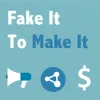Take a look inside 9 images
Fake It to Make It
Pros: The realistic scenario will motivate students. Students learn about deceptive news from a novel perspective.
Cons: Progress tracking can be unclear. Limited language options.
Bottom Line: Creating a fake news site and tracking its success offers students a compelling, real-world way in to important media literacy conversations.
How Can I Teach with This Tool?
Fake It to Make It is a web-based simulation game about the business and manipulative techniques behind fake news. The novel spin is that students work on behalf of a fake news website to learn about how inaccuracies are spread. Students must create a successful site that both manipulates the public and generates enough money to purchase necessities like a car, housing, or other items. Students decide what types of sites and articles they'd like to create, and increase profit with increasingly politically divided articles that stir negative emotions and gain the public's attention. By taking on the role of a media manipulator, students recognize fake news and clickbait and how the media can emotionally manipulate people.
The game is self-led, so students can work through it on their own and see who can make the most profit from their mock websites. Teachers could hold debriefs after play and work with students to identify the various manipulative techniques they've learned and how they might best identify them in the real world. Teachers might also task students with writing up mock articles that fit under the headings, since the game simply requires students to pick a headline to create an article. While the game encourages students to continue to expand their sites with a running list of tasks, it is unclear how the game can be "won" since there's no progress bar or end goal, which might detract from students' drive to complete it. Overall, the game could be an enticing introduction to media literacy conversations.

















